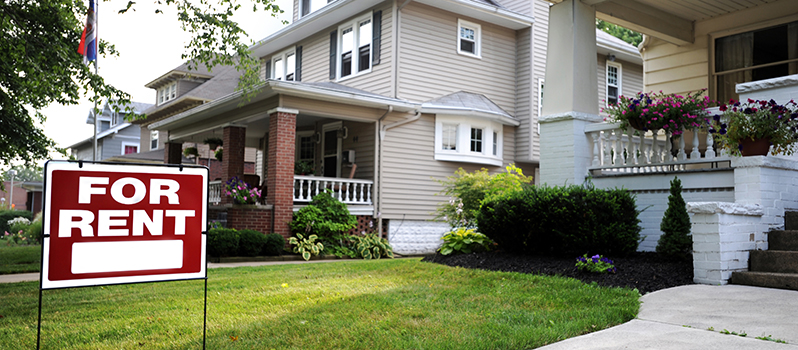
Rental Dwellings: Underwriting Guidance for Premises Liability
By Melissa Stream, Underwriting Consultant
When an insured requests to add a rental dwelling to their primary liability policy, you have endorsements and premium charges available to add to their policy.
The WRC Liability Manual provides underwriting rules and guidelines as well as endorsements that should be added. It may also be helpful for me to provide additional underwriting assistance for when you use those Rented-to-Others (RTO) charges. By adding the premium charge and endorsement to the policy, you’re extending premises liability coverage for an additional location that is not occupied by the owner. (These tips can also apply to separate policies for rental dwellings.)
While it’s important to underwrite the property exposure of the dwelling, it’s just as important to underwrite the premises as it’s being used by tenant(s) and their visitors and guests. As the underwriter, you will want to make sure your insured is maintaining the dwelling and premises. You also should ensure they are keeping it free from property issues and liability hazards that could result in injury to the tenant or tenant’s guest(s).
The WRC liability underwriting guidelines prohibit using the RTO charges/endorsements for apartment buildings. However, many of the underwriting guidelines for apartments can also be applied to underwriting a rental dwelling. You can find the Commercial Habitational Underwriting Guide here. You also can find the guide by logging in to the secure WRC website and going to Documents > Commercial Lines Underwriting > Classification Underwriting Guides.
Most of the RTO charges are $100 or less, yet it is important to underwrite these additional exposures when you’re asked to add the premium charge due to the potential liability losses that could occur.
Questions to ask and reasons to ask them:
Has the insured owned rental property in the past?
If it’s their first rental property, it’s even more important to underwrite the addition of this new location. It’s an opportunity to learn if the insured has bought a well-maintained property or one that needs repairs and updates. It will indicate if they plan to maintain the dwelling and make it safe for tenant(s) and their guests and visitors.
What is the total number of rental units owned by the named insured?
The maximum number is eight rental units for those rented to others that can be added to the insured’s primary liability policy. A rental unit is the number of households in one building. For example, a duplex not occupied by the owner would be two units.
What is the insured’s financial condition? Are funds sufficient for maintenance?
If the insured can’t afford to maintain the property, it can become a significant source of property and liability hazards.
Are the rental units owned by the named insured, or have they purchased the dwelling under a different name or entity?
If the rental is owned by a different name or entity, they may not have appropriate coverage because the owner’s name is not the same as the named insured. If the rental is owned by an entity, the company should write a separate policy for property and liability.
Does the insured use a standard rental contract?
A rental contract is important for many reasons, but especially in matters of maintenance of the premises, security deposit and monthly rent amounts, utility expenses and eviction procedures. Standard rental contracts can be found on the internet, and at office supply stores.
Does the insured require the tenant to obtain and maintain renter’s insurance for their personal property and personal liability?
This requirement will educate the tenant on their responsibilities and those of the landlord. It also will clarify that the landlord’s policy will not cover the tenant’s personal property or personal liability. Some landlords have this requirement written into the rental contract.
Who is responsible for lawn care and snow removal?
This is extremely important for ensuring the premises is free of liability hazards, especially snow and ice. If the lawn care and/or snow removal is contracted to a third party, the insured should verify that the contractor carries appropriate coverage.
What condition are the sidewalks, walkways, driveways, parking lots and entrances/exits?
They should be well lit, free of debris and in good condition. Potholes and cracks should be promptly repaired. If the landlord is responsible for exterior maintenance, this is included to keep the premises clear of liability hazards.
Does the insured have rules about use of the premises regarding pets, trampolines, pools and other attractive nuisances?
This is another opportunity for the landlord to educate the tenant that these exposures are their responsibility and emphasize the importance of tenant’s liability insurance.
If the insured allows pets, what is the maximum number of pets and types of pets allowed? Do they have a maximum weight for dogs?
The insured should tread carefully if the tenant has a service animal (and in some states emotional support animals may also be protected), but otherwise the landlord can maintain strict rules about allowed pets, if any. This is where the insured can remind tenants about the hazards of injuries caused by dogs and why their renter’s liability insurance is important.
Does the insured list the dwelling(s) on home-sharing websites (Airbnb, VRBO, etc.)?
If the insured is renting the dwelling more than 30 times in a 12-month period, we strongly recommend that the dwelling(s) be covered under a policy with commercial property and liability forms instead of extended from the primary liability policy. This approach will enable the insured to obtain the appropriate coverage for this type of exposure.
If you have any questions, please contact your underwriting consultants.
